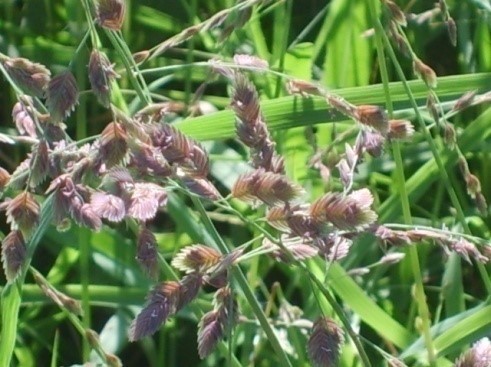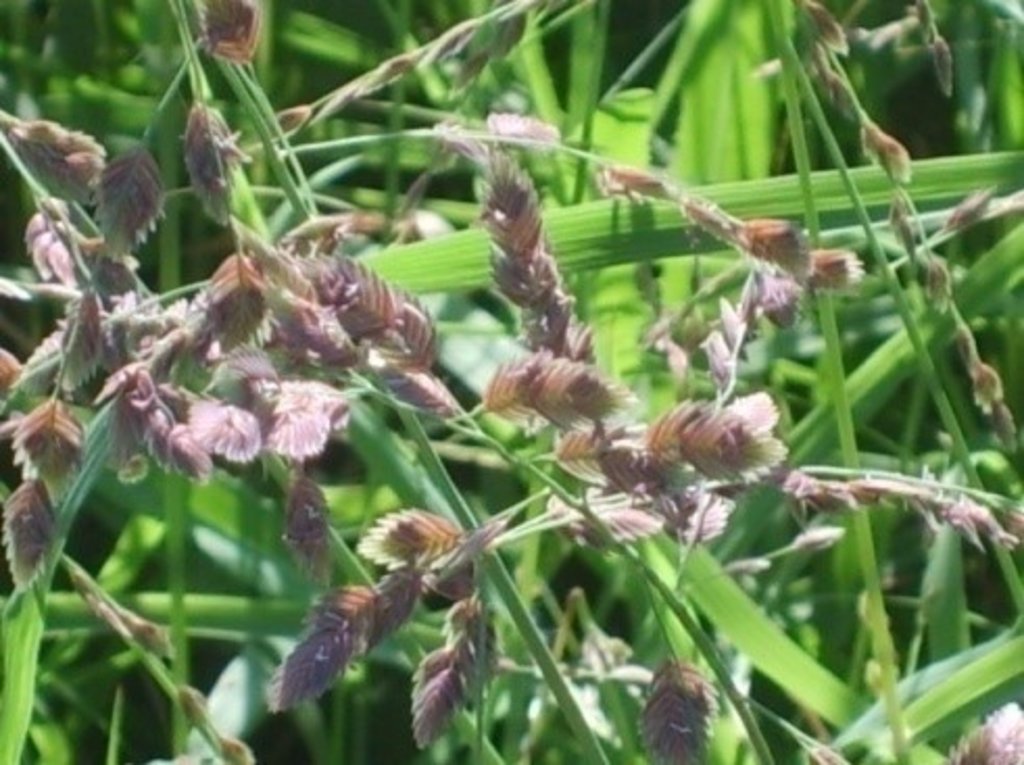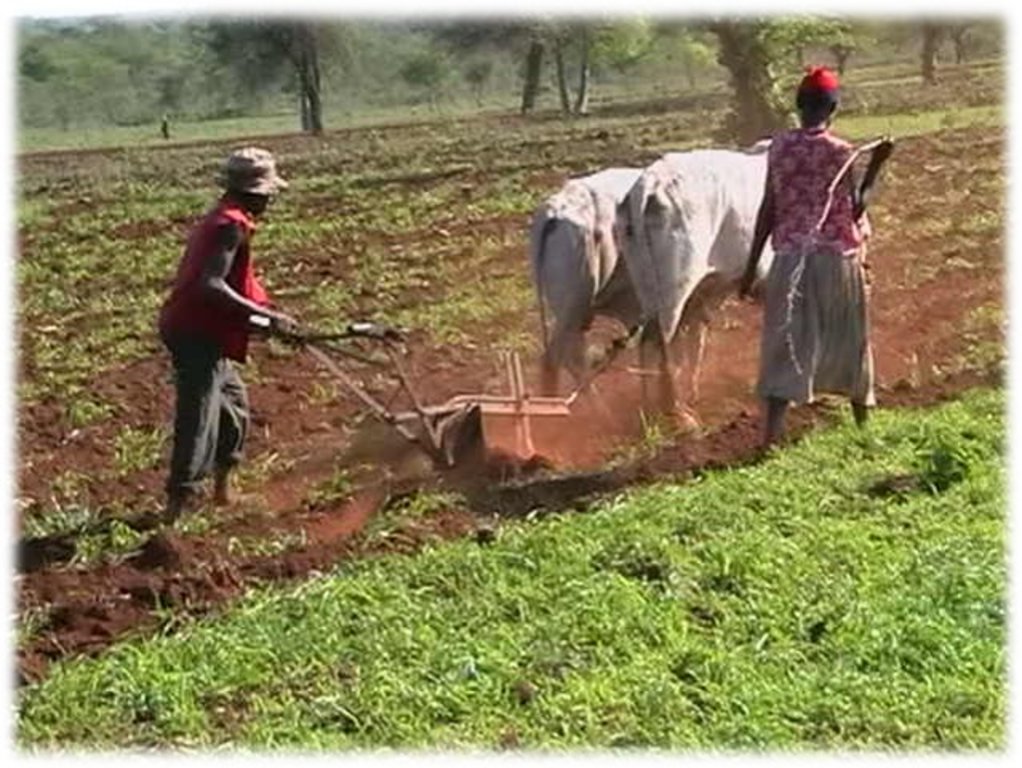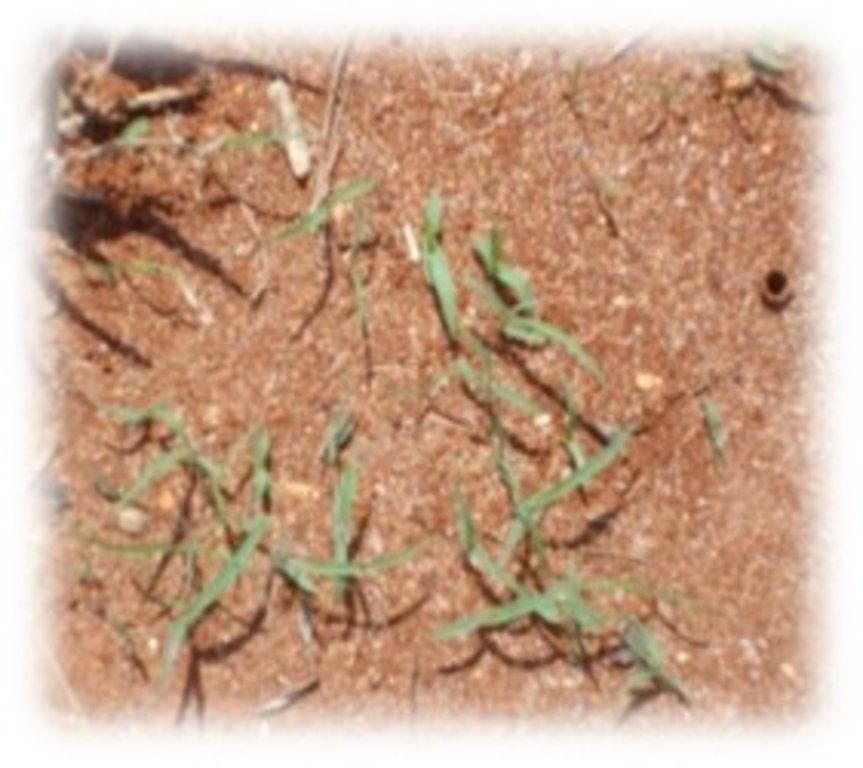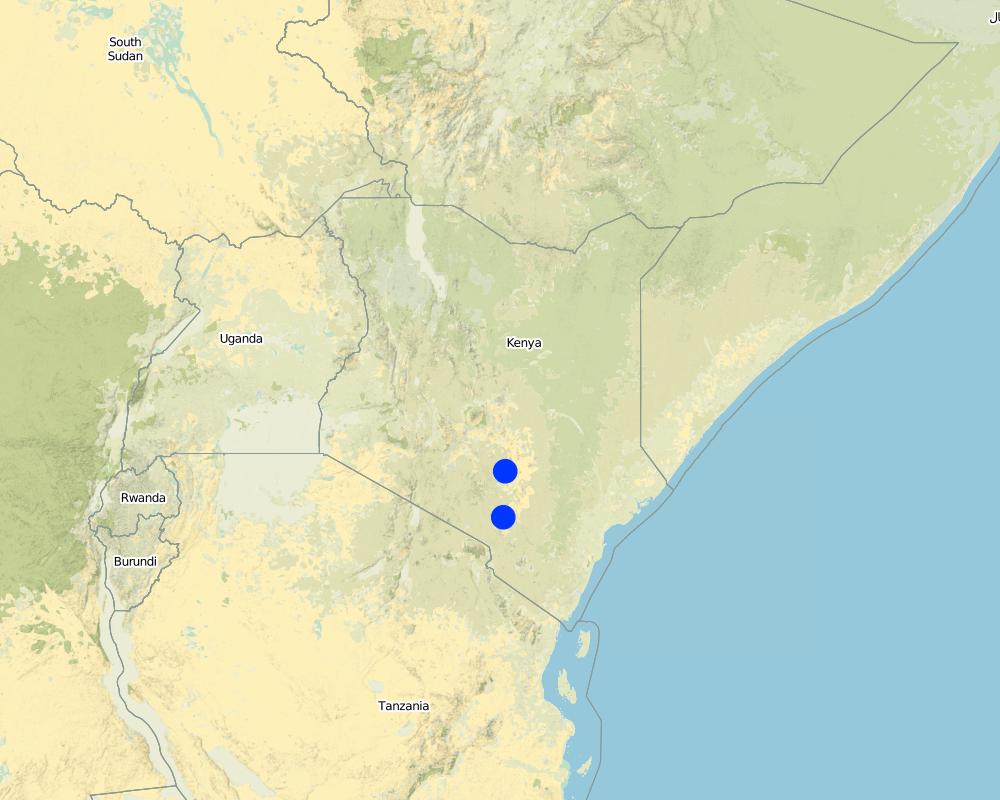Grass reseeding [Kenya]
- Creation:
- Update:
- Compiler: Kevin Mganga
- Editor: –
- Reviewer: Rima Mekdaschi Studer
Reseeding
technologies_2288 - Kenya
View sections
Expand all Collapse all1. General information
1.2 Contact details of resource persons and institutions involved in the assessment and documentation of the Technology
Name of the institution(s) which facilitated the documentation/ evaluation of the Technology (if relevant)
Department of Range and Wildlife Sciences, South Eastern Kenya University (SEKU) - Kenya1.3 Conditions regarding the use of data documented through WOCAT
When were the data compiled (in the field)?
01/01/2016
The compiler and key resource person(s) accept the conditions regarding the use of data documented through WOCAT:
Yes
1.4 Declaration on sustainability of the described Technology
Is the Technology described here problematic with regard to land degradation, so that it cannot be declared a sustainable land management technology?
No
1.5 Reference to Questionnaire(s) on SLM Approaches
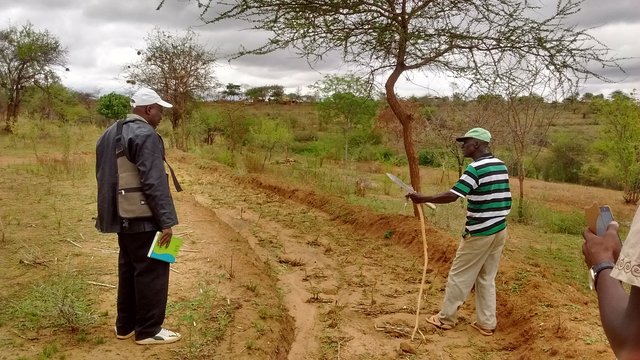
On-farm indigenous pasture establishment demonstrations [Kenya]
On-farm indigenous pasture establishment demonstrations offer a practical approach to encourage adoption in the arid and semi-arid environments in Kenya.
- Compiler: Kevin Mganga
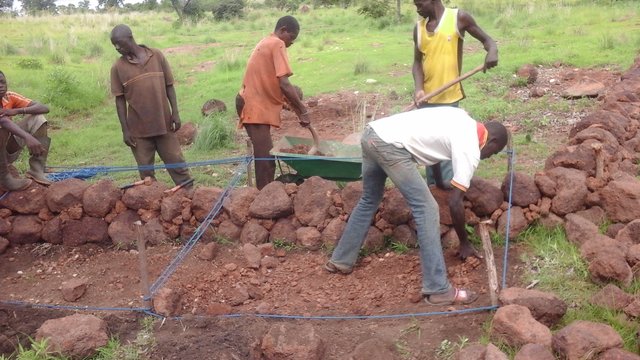
Combating erosion, recovery and enhancement of degraded land … [Burkina Faso]
The approach applied in this project is an integrated and multi-stakeholder approach in the South West of Burkina Faso, based on watershed management and sustainable land management with a strong emphasis on local participation. It carries out physical and biological measures against erosion, adaptation to climate change and various activities …
- Compiler: Rebecka Ridder
2. Description of the SLM Technology
2.1 Short description of the Technology
Definition of the Technology:
Grass reseeding is a sustainable land management practice aimed at rehabilitating degraded pastures and providing livestock feed. This is mainly carried out with indigenous perennial grass species.
2.2 Detailed description of the Technology
Description:
Grass reseeding is a sustainable land management practice especially appropriate for pastoral and agro-pastoral communities inhabiting the arid and semi-arid rangelands of the world. Seedbed preparation involves clearing of invasive bush patches and creation of furrows across the slope using an ox-plough (traditional) or shallow and light ploughing using a tractor (modern). Grass seeds are sown along the furrows which are created directly in the degraded grazing land. The seeds are lightly covered with soil because the indigenous grass seeds are very small. This encourages faster emergence of grass seedlings. The slope should be generally flat or very gentle (<5%) to reduce the speed of runoff, thus prevent soil erosion and consequently the washing away of the grass seeds. Eroded and deposited seeds will eventually lead to uneven establishment of pasture, mainly concentrated downslope. Minimal soil disturbance by ox-plough or tractor facilitates root penetration of the seedlings and also helps breaking the soil surface hardpan formed by continuous hoof action.
Furrows constitute a form of in-situ moisture conservation, capturing rainwater where it falls, thus increasing availability of water for emerging seedlings. The main purpose of this technology is to rehabilitate degraded natural pastures and provide a continuous source of livestock feed especially during lean periods. Use of indigenous grass species e.g. Eragrostis superba, Cenchrus ciliaris, Enteropogon macrostachyus and Chloris roxburghiana is advocated for better establishment and subsequent development. Ecological impacts of this technology include improved soil cover and reduced soil erosion. In addition to rehabilitating degraded natural pastures and improving quality and quantity for livestock production, grass reseeding has additional socio-economic impacts, thus benefiting rural livelihoods. This is through the sale of hay and grass seed and surplus milk in the local market, which provide supplementary sources of income.
2.3 Photos of the Technology
2.5 Country/ region/ locations where the Technology has been applied and which are covered by this assessment
Country:
Kenya
Region/ State/ Province:
Eastern
Further specification of location:
Kibwezi
Comments:
Arid and Semi-Arid Lands (ASALS) in Kenya.
Map
×2.6 Date of implementation
If precise year is not known, indicate approximate date:
- 10-50 years ago
2.7 Introduction of the Technology
Specify how the Technology was introduced:
- during experiments/ research
3. Classification of the SLM Technology
3.1 Main purpose(s) of the Technology
- improve production
- reduce, prevent, restore land degradation
- reduce risk of disasters
- mitigate climate change and its impacts
3.2 Current land use type(s) where the Technology is applied

Grazing land
Extensive grazing land:
- Nomadism
- Semi-nomadism/ pastoralism
- Ranching
3.3 Further information about land use
Water supply for the land on which the Technology is applied:
- rainfed
Number of growing seasons per year:
- 2
Specify:
Bimodal rainfall pattern (March-May) and (October-December).
Livestock density (if relevant):
On average 2-3 cattle, 7-8 goats, 2 sheep per household
3.4 SLM group to which the Technology belongs
- pastoralism and grazing land management
- minimal soil disturbance
- water harvesting
3.5 Spread of the Technology
Specify the spread of the Technology:
- applied at specific points/ concentrated on a small area
Comments:
Practiced among several agropastoral and pastoral households in the arid and semi-arid lands
3.6 SLM measures comprising the Technology

vegetative measures
- V2: Grasses and perennial herbaceous plants

structural measures
- S4: Level ditches, pits
3.7 Main types of land degradation addressed by the Technology

soil erosion by water
- Wt: loss of topsoil/ surface erosion

physical soil deterioration
- Pc: compaction
- Pi: soil sealing

biological degradation
- Bc: reduction of vegetation cover
- Bh: loss of habitats
- Bq: quantity/ biomass decline
- Bs: quality and species composition/ diversity decline
3.8 Prevention, reduction, or restoration of land degradation
Specify the goal of the Technology with regard to land degradation:
- reduce land degradation
- restore/ rehabilitate severely degraded land
4. Technical specifications, implementation activities, inputs, and costs
4.1 Technical drawing of the Technology
4.2 Technical specifications/ explanations of technical drawing
15-20 cm deep and 10-15 cm wide furrows across the slope. Spacing between furrows is 15-20 cm and depends mostly on plant species. Seeds are sown along the furrows intentionally built to capture and hold rainwater. Flat or very gentle (<5%) slope to reduce runoff.
4.3 General information regarding the calculation of inputs and costs
Specify how costs and inputs were calculated:
- per Technology area
Indicate size and area unit:
Hectare
Specify currency used for cost calculations:
- US Dollars
Indicate average wage cost of hired labour per day:
5
4.4 Establishment activities
| Activity | Type of measure | Timing | |
|---|---|---|---|
| 1. | Creation of furrow micro-catchments with ox-plough | Agronomic | Before onset of the rains |
| 2. | Sowing (seed placement and covering with soil) | Agronomic | Before onset of the rains |
| 3. | Gapping (reseeding gaps with poor establishment and cover) | Vegetative | After establishment |
4.5 Costs and inputs needed for establishment
| Specify input | Unit | Quantity | Costs per Unit | Total costs per input | % of costs borne by land users | |
|---|---|---|---|---|---|---|
| Labour | Casual and Household labour | person-days | 4.0 | 5.0 | 20.0 | 100.0 |
| Equipment | Hiring ox-driven plough | person-days | 4.0 | 100.0 | 400.0 | 100.0 |
| Plant material | Seeds | kgs | 5.0 | 10.0 | 50.0 | 100.0 |
| Total costs for establishment of the Technology | 470.0 | |||||
4.6 Maintenance/ recurrent activities
| Activity | Type of measure | Timing/ frequency | |
|---|---|---|---|
| 1. | Gapping (i.e. reseeding bare areas (patches) with poor germination and cover) | Vegetative | Seasonal |
Comments:
Gapping is done to ensure uniform plant cover
4.7 Costs and inputs needed for maintenance/ recurrent activities (per year)
| Specify input | Unit | Quantity | Costs per Unit | Total costs per input | % of costs borne by land users | |
|---|---|---|---|---|---|---|
| Labour | Casual and household labour | person-days | 1.0 | 5.0 | 5.0 | 100.0 |
| Equipment | Ox-driven plough | person-days | 1.0 | 100.0 | 100.0 | 100.0 |
| Plant material | Seed | kg | 1.0 | 10.0 | 10.0 | 100.0 |
| Total costs for maintenance of the Technology | 115.0 | |||||
4.8 Most important factors affecting the costs
Describe the most determinate factors affecting the costs:
Seed availability in the 'informal markets' i.e. between farmers and farmer groups, research organisation, influences the cost of grass seed. This is mainly determined by the preceding rainy season.
5. Natural and human environment
5.1 Climate
Annual rainfall
- < 250 mm
- 251-500 mm
- 501-750 mm
- 751-1,000 mm
- 1,001-1,500 mm
- 1,501-2,000 mm
- 2,001-3,000 mm
- 3,001-4,000 mm
- > 4,000 mm
Specify average annual rainfall (if known), in mm:
700.00
Specifications/ comments on rainfall:
Highly variable in space, time and season.
Indicate the name of the reference meteorological station considered:
Meteorological Station - South Eastern Kenya University
Agro-climatic zone
- semi-arid
5.2 Topography
Slopes on average:
- flat (0-2%)
- gentle (3-5%)
- moderate (6-10%)
- rolling (11-15%)
- hilly (16-30%)
- steep (31-60%)
- very steep (>60%)
Landforms:
- plateau/plains
- ridges
- mountain slopes
- hill slopes
- footslopes
- valley floors
Altitudinal zone:
- 0-100 m a.s.l.
- 101-500 m a.s.l.
- 501-1,000 m a.s.l.
- 1,001-1,500 m a.s.l.
- 1,501-2,000 m a.s.l.
- 2,001-2,500 m a.s.l.
- 2,501-3,000 m a.s.l.
- 3,001-4,000 m a.s.l.
- > 4,000 m a.s.l.
Indicate if the Technology is specifically applied in:
- convex situations
Comments and further specifications on topography:
Altitude 900 m above sea level
Slope angle - flat 0-2% and gentle 3-5 % slopes
5.3 Soils
Soil depth on average:
- very shallow (0-20 cm)
- shallow (21-50 cm)
- moderately deep (51-80 cm)
- deep (81-120 cm)
- very deep (> 120 cm)
Soil texture (topsoil):
- coarse/ light (sandy)
- medium (loamy, silty)
Soil texture (> 20 cm below surface):
- coarse/ light (sandy)
- medium (loamy, silty)
Topsoil organic matter:
- low (<1%)
5.4 Water availability and quality
Ground water table:
5-50 m
Availability of surface water:
medium
Water quality (untreated):
poor drinking water (treatment required)
Is water salinity a problem?
No
Is flooding of the area occurring?
No
Comments and further specifications on water quality and quantity:
Seasonal flactuation depending on rainfall
5.5 Biodiversity
Species diversity:
- medium
Habitat diversity:
- medium
Comments and further specifications on biodiversity:
Due to intensive utilisation of natural pastures, notably due to overgrazing, indigenous pasture species are depleted and replaced by less preferred invasive plant species. However, reseeded pastures reverses this trend by re-introducing various species the indigenous pastures which can naturally co-exist and reduce competition with other herbaceaous plant species, thereby increases biodiversity.
5.6 Characteristics of land users applying the Technology
Sedentary or nomadic:
- Sedentary
- Semi-nomadic
Market orientation of production system:
- subsistence (self-supply)
- mixed (subsistence/ commercial
Off-farm income:
- 10-50% of all income
Relative level of wealth:
- poor
- average
Individuals or groups:
- individual/ household
- groups/ community
Level of mechanization:
- manual work
- animal traction
Gender:
- women
- men
Age of land users:
- youth
- middle-aged
5.7 Average area of land owned or leased by land users applying the Technology
- < 0.5 ha
- 0.5-1 ha
- 1-2 ha
- 2-5 ha
- 5-15 ha
- 15-50 ha
- 50-100 ha
- 100-500 ha
- 500-1,000 ha
- 1,000-10,000 ha
- > 10,000 ha
Is this considered small-, medium- or large-scale (referring to local context)?
- small-scale
- medium-scale
5.8 Land ownership, land use rights, and water use rights
Land ownership:
- communal/ village
- individual, titled
Land use rights:
- communal (organized)
- individual
Water use rights:
- communal (organized)
- individual
Comments:
Communal land use right - e.g. common grazing land, reserved and seasonal grazing areas (large scale)
Individual land use right - e.g. individual pasture establishment within individual owned land
Communal water use rights - e.g. watering point, river, lake, stream, community water reservoir, boreholes
Individual water use rights - e.g. individual tap water, roof water catchment
5.9 Access to services and infrastructure
health:
- poor
- moderate
- good
education:
- poor
- moderate
- good
technical assistance:
- poor
- moderate
- good
employment (e.g. off-farm):
- poor
- moderate
- good
markets:
- poor
- moderate
- good
energy:
- poor
- moderate
- good
roads and transport:
- poor
- moderate
- good
drinking water and sanitation:
- poor
- moderate
- good
financial services:
- poor
- moderate
- good
6. Impacts and concluding statements
6.1 On-site impacts the Technology has shown
Socio-economic impacts
Production
fodder production
fodder quality
Income and costs
farm income
diversity of income sources
Ecological impacts
Soil
soil cover
soil loss
6.2 Off-site impacts the Technology has shown
buffering/ filtering capacity
Comments/ specify:
Reseeded areas improve the soil hydrological properties by reducing the impact of raindrops thus reducing soil disturbance and increasing water infiltration capacity. Consequently, runoff, and sediment production - an index of soil erosion, are greatly reduced.
6.3 Exposure and sensitivity of the Technology to gradual climate change and climate-related extremes/ disasters (as perceived by land users)
Gradual climate change
Gradual climate change
| Season | Type of climatic change/ extreme | How does the Technology cope with it? | |
|---|---|---|---|
| annual rainfall | decrease | well |
6.4 Cost-benefit analysis
How do the benefits compare with the establishment costs (from land users’ perspective)?
Short-term returns:
slightly positive
Long-term returns:
positive
How do the benefits compare with the maintenance/ recurrent costs (from land users' perspective)?
Short-term returns:
slightly positive
Long-term returns:
positive
6.5 Adoption of the Technology
- 10-50%
Of all those who have adopted the Technology, how many have did so spontaneously, i.e. without receiving any material incentives/ payments?
- 50-90%
6.6 Adaptation
Has the Technology been modified recently to adapt to changing conditions?
No
6.7 Strengths/ advantages/ opportunities of the Technology
| Strengths/ advantages/ opportunities in the land user’s view |
|---|
| Increased quantities of livestock forage especially during the dry season (fodder reserves). |
| Diversification of source of income through sale of grass hay and seeds. |
| Improving the environment i.e. rehabilitating degraded grazing land. |
| Strengths/ advantages/ opportunities in the compiler’s or other key resource person’s view |
|---|
| Reliable source of livestock forage especially during periods of drought. |
| Diversification of source of income through sale of grass hay and seeds. |
| Improving the environment i.e. rehabilitating degraded grazing land. |
| Climate change mitigation through carbon (C) sequestration. |
6.8 Weaknesses/ disadvantages/ risks of the Technology and ways of overcoming them
| Weaknesses/ disadvantages/ risks in the land user’s view | How can they be overcome? |
|---|---|
| Successful establishment is dependent on amount, distribution and duration (rainy days) of rainfall in the area. | Improved rainwater capture and storage technologies. |
| Seed availability - quantity and quality | Large-scale production of good quality indigenous seed to supply the pastoral and agropastoral communities at a subsidized price. |
| Weaknesses/ disadvantages/ risks in the compiler’s or other key resource person’s view | How can they be overcome? |
|---|---|
| Rainfed and climatic (rainfall dependent) | Improved rainwater harvesting and storage technologies |
| Seed availability - quantity and quality | Large-scale production of good quality indigenous seed to supply the pastoral and agropastoral communities at a subsidized price. |
| Low uptake/interest among the youth, students | Sensitization of the youth as a source of income (business) |
7. References and links
7.1 Methods/ sources of information
7.2 References to available publications
Title, author, year, ISBN:
KZ Mganga, NKR Musimba, DM Nyariki. 2015. Competition indices of three perennial grasses used to rehabilitate degraded semi-arid rangelands in Kenya. The Rangelands Journal 37: 489-495
Available from where? Costs?
The Rangeland Journal website, US Dollars $25
Title, author, year, ISBN:
KZ Mganga, NKR Musimba, DM Nyariki. 2015. Combining sustainable land management technologies to combat land degradation and improve rural livelihoods in semi-arid lands in Kenya. Environmental Management 56: 1538-1548
Available from where? Costs?
Environmental Management Journal website, US Dollars $38
Title, author, year, ISBN:
KZ Mganga, NKR Musimba, MM Nyangito, DM Nyariki, AW Mwang’ombe. 2015. The choice of grass species to combat desertification in semi-arid Kenyan rangelands is greatly influenced by their forage value for livestock. Grass and Forage Science 70: 161-167.
Available from where? Costs?
Grass and Forage Science Journal website, US Dollars $38
7.3 Links to relevant information which is available online
Title/ description:
Competition indices of three perennial grasses used to rehabilitate degraded semi-arid rangelands in Kenya
URL:
http://www.publish.csiro.au/rj/RJ15023
Title/ description:
Combining sustainable land management technologies to combat land degradation and improve rural livelihoods in semi-arid lands in Kenya
URL:
https://link.springer.com/article/10.1007/s00267-015-0579-9
Title/ description:
The choice of grass species to combat desertification in semi-arid Kenyan rangelands is greatly influenced by their forage value for livestock
URL:
http://onlinelibrary.wiley.com/doi/10.1111/gfs.12089/abstract
Links and modules
Expand all Collapse allLinks

On-farm indigenous pasture establishment demonstrations [Kenya]
On-farm indigenous pasture establishment demonstrations offer a practical approach to encourage adoption in the arid and semi-arid environments in Kenya.
- Compiler: Kevin Mganga

Combating erosion, recovery and enhancement of degraded land … [Burkina Faso]
The approach applied in this project is an integrated and multi-stakeholder approach in the South West of Burkina Faso, based on watershed management and sustainable land management with a strong emphasis on local participation. It carries out physical and biological measures against erosion, adaptation to climate change and various activities …
- Compiler: Rebecka Ridder
Modules
No modules


